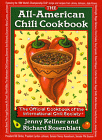
New Rations Bring Hot Turkey to the Troops
By Jim Garamone
American Forces Press Service
WASHINGTON -- Getting a hot meal to soldiers, Marines and airmen in the field is going to get a lot easier thanks to new rations being developed by the Army.
Called unitized group rations-A, the new rations are entering the supply pipeline now. The idea behind the rations is to serve service members hot, home-style foods in the field.
"We're talking about feeding a group of soldiers vs. individual MRE bag meals," said Rick Byrd, a quality assurance specialist with U.S. Army Center of Excellence-Subsistence at Fort Lee, Va. "These are hot meals prepared by food service personnel."
Before these rations, cooks had to order 33 to 52 separate line items to prepare one meal for their unit. Fort Lee officials packaged the rations so they only need two stock numbers. The items are in three boxes that contain enough food to feed 50 people.
"The unit adds bread and milk and it's complete. Food service personnel can also enhance the meal by adding fruit and salads," Byrd said.
There are five breakfast menus and 10 others for lunch and dinner, Byrd said. The boxed rations contain primarily commercial items with familiar name brands such as Eggo, Hungry Jack or Aunt Jemima waffles that service members ages 18-24 will recognize, he said.
The turkey menu comes with Stovetop stuffing and Uncle Ben's rice. Kool-aid and Tabasco sauce accompany most rations. "We call this 'branding the ration,'" Byrd said. Other main dishes include Creole macaroni, BBQ beef, grilled hamburgers, grilled steak, chili and chicken.
The Army tested the rations at Fort Stewart, Ga.; Fort Bliss, Texas; Fort Campbell, Ky.; Fort Riley, Kan.; Fort Sill, Okla.; Fort Bragg, N.C.; and Schofield Barracks, Hawaii. Byrd said soldiers accepted the rations overwhelmingly.
"Soldiers suspected there must have been dignitaries nearby because they were eating so well," he quipped. "In all of my years here, I have never seen field rations more accepted."
Byrd said the Air Force is looking at the rations and Marines will use them if they are in operations where they draw supplies from the Army. He expects service members overseas will start seeing the rations in January.
The Defense Support Center in Philadelphia recently awarded contracts to six companies for the rations. The minimum total value is an estimated $6.2 million, but can go up to $117 million.
"This ration provides essentially what industry now offers homemakers of America today," said John Knapp, vice president of a winning contractor, Ameriqual, Inc. of Evansville, Ind. "Homemakers need to have hot meals on
table quickly. This ration is field feeding for speed and preparation."
Of the three boxes, two contain semi-perishable items, Knapp said. The third contains perishables and frozen foods such as main entrees, meat, eggs and waffles, he said.
The new rations also make it easier to supply service members. Previously, supply agencies needed 12 hours to collect A-rations to support an Army brigade. With the new rations, the process takes 1.5 hours with fewer personnel, according to Army officials.
For more information and a list of the menus go to http://www.dscp.dla.mil/subs/rations/ugr.htm.
March 2000
| Bulletin Board | Keyword Search |
| Bookstore | Links |
| About Us | Recent Additions |
![]()

